-
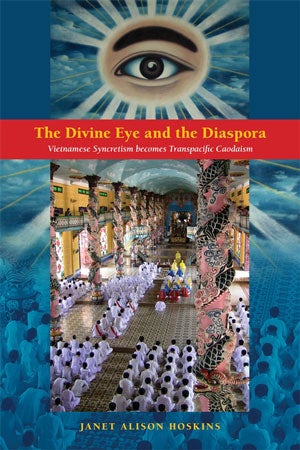
“Centering on the notion of ‘Transpacific religion,’ Hoskins pairs the biographical profiles of five founding generation adherents with those of their diasporic successors, also depicting the wider contexts of both. In doing so, she skillfully weaves a brilliantly engaging narrative, outlining the complex history and nature of this movement in Vietnam and overseas…This is an essential reading for the student of Vietnamese religions and those dealing with East Asian new religious movements in general.”
—Religious Studies Review, 42:1 (March 2016)
“The Divine Eye and the Diaspora is meticulously researched, richly detailed and engagingly written, making accessible to Angolophone readers the world of Cao Đài believers overseas and in Vietnam. Her deeply sympathetic portrayal is especially welcome given the complexity of Cao Đài religion and the misunderstandings to which its equally complicated history has given rise.”
—Hue-Tam Ho Tai, Harvard University, SOJOURN Symposium, 31:3 (November 2016)
“Hoskins’s book is a tour-de-force. It is a deep history, which incorporates a wide-range of primary and secondary (including film and fiction) sources in Vietnamese. It is a complex ethnography with photographs, interviews, and an intimate portrait of a community that has survived despite emerging from and growing up in one of the most violent places of the 20th century. It is a well-crafted historiography of the ways in which tourists, scholars, novelists, and politicians have depicted, often wrongly, this apparently very odd religion…This book should be essential reading for students and scholars of modern Vietnam Studies and diaspora studies.”
—Justin McDaniel, University of Pennsylvania, SOJOURN Symposium, 31:3 (November 2016)
“There is much to praise in The Divine Eye and the Diaspora. It addresses foundational issues in the study of religion, diaspora, and decolonization. It links the study of the Cao Đài comparatively to debates over how to study such topics, thus ‘de-provincializing’ the study of Vietnam and the Vietnamese. It is intellectually satisfying: it aptly brings people as theoretically different as Jean Baudrillard, Stuart Hall, Pierre Bourdieu, and Max Weber into a dialogue over a major diasporic religion. At the same time, Hoskins wears her learning lightly. Even when one quibbles with her, this book gives much food for thought, and I recommend it to readers enthusiastically.”
—Shawn McHale, The Journal of Asian Studies, 78:2 (May 2019)
“Hoskins demonstrates that what others have observed as an ‘outrageous’ religion was, in fact, a drive that was serving a specific function for its community at every point. In short, the first half of Caodaism’s history served to liberate a colonized Vietnam and the second half alleviated the tensions of exile and migration…The Divine Eye and the Diaspora is an impressive project, one that demonstrates the importance of long-term ethnographic research and the expertise that can only be obtained from years of participant observation.”
—Torang Asadi, Duke University, Nova Religio, 20:2 (November 2016)
“[T]he rich ethnographic work of the book promises to provide several questions that are ripe for classroom discussion and further analysis…While the book is certainly a contribution for the specific study of the Cao Đài religion and the Vietnamese diaspora, it also provides a good amount of material to discuss with students and fellow researchers in the fields of history, anthropology, religious studies and diaspora studies.”
—William B. Noseworthy, New Mandala, 13 September 2015
“Rich in historical-ethnographic data, The Divine Eye provides scholars of Southeast Asia with a nuanced and sympathetic understanding of the syncretic tradition of Caodaism. Hoskins engages with and builds on the scholarship of religious syncretism and transnationalism, examining not only the historically conditioned process of religious imagination, but also how diasporic communities rearticulate and rework religious messages and boundaries to ‘manage and overcome religious differences and geographical challenges.’”
—Dat Manh Nguyen, Boston University, Southeast Asian Studies, 7:1 (April 2018)
-
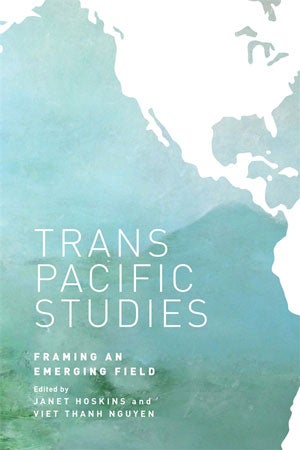
Edited by Janet Hoskins and Viet Thanh Nguyen
“The editors of Trans-Pacific Studies…seek critical and subaltern perspectives to study a new field of inquiry which will combine the lessons of Asian Studies, Asian-American Studies and American Studies into a re-figurative dynamic. As such, each of the above disciplines must be shaken from their routine pathways and familiar boundaries and draw inspiration from the contemporary movements of people and scholars—as well as goods and ideas—as both the stuff and the frame of this emergent region….All in all, this volume has taken an important step in developing methods, perspectives and approaches to a new field of inquiry.” —Prasenjit Duara, International Journal of Asian Studies, 14:1 (January 2017)
“[T]his book is much more than a postcolonial intellectual effort. Indeed, one of the virtues of this book is that it opens the arena to an enriching dialogue about the scope and content of transpacific studies as an emerging field….Moreover, the justification for a volume on the transpacific does not require a straw man: the social spaces that fill the intra-Pacific relations—which are aptly developed in most chapters—are rich enough to justify the intellectual effort of rethinking the Pacific as an area of study. Despite its limitations, the editors should be commended for their openness to views that do not necessarily reflect their own, and this ambitious book is a valuable resource for scholars and the general public with an interest in the Pacific.” —Pedro Iacobelli, International Social Science Review, 91:1 (2015)
-
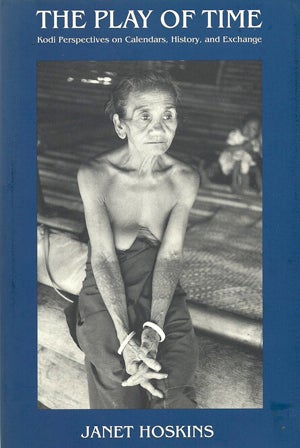
Janet Hoskins provides both an ethnographic study of the organization of time in an Eastern Indonesian society and a theoretical argument about alternate temporalities in the modern world. Based on more than three years of field work with the Kodi people of the island of Sumba, her book focuses on Kodi calendrical rituals, exchange transactions, and confrontations with the historical forces of the colonial and postcolonial world. Hoskins explores the contingent, contested, and often contradictory precedent of the past to show how local systems of knowledge are in dialogue with wider historical forces.
Arguing that traditional temporality is more complex than many theorists have realized, Hoskins highlights the flexibility and relativity of local time concepts, whose sophistication belies the cliche of simple societies living in a world outside of time.
“Those who assert the globalization of culture or question the validity of pursuing ethnographic investigations into small-scale self-generating societies should read Hoskins’s magnificent study of Kodi social and conceptual worlds in order to have such views disabused. . . . Rich in ethnographic detail.”—Signe Howell, Ethnos
“A landmark volume in the ethnography of Eastern Indonesia and an exemplary study of structure and history.”—Kenneth M. George, Pacific Affairs
“Hoskins’s work combines superb ethnography, an extremely high level of sophistication, and a remarkable component of humanistic sensitivity. The result is a book of serious reflection that creatively challenges and extends many aspects of the best previous scholarship in a variety of areas, including ritual studies, exchange theory, and the dynamics of modernization and local resistance.”—Harry J. Benda Prize Committee
Winner, 1996 Harry J. Benda Prize, Association for Asian Studies
-
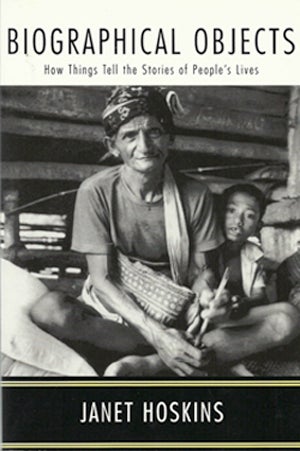
In this innovative study, six women and men from Eastern Indonesia narrate their own lives by talking about their possessions–domestic objects used to construct a coherent identity through a process of identification and “self-historicizing.” Janet Hoskins explores how things are given biographical significance and entangled in sexual politics, expressed in dualistic metaphors where the familiar distinctions between person and object and female and male are drawn in unfamiliar ways. Biographical Objectsis an ethnography of persons which takes the form of a study of things, showing how the object is not only a metaphor for the self but a pivot for reflexivity and introspection, a tool for autobiographic elaboration, a way of knowing oneself through things.
“[T]he book’s heart really lies in the vicissitudes of personal experience, and the ethnographer’s relationships with certain individuals. In this respect, the book properly takes its place among other recent works that center on the particularities of experience. Here the author’s long fieldwork in Kodi serves her well.” – Indonesia
“The stories are beautifully told, and Hoskins makes it easy to enjoy them. …she is a very welcome guide, helping the reader follow the chains of metaphors that turn experience into poetry. Any student who has suffered through Saussure and Levi-Strauss deserves the pleasure of reading this book.” — The Journal of Asian Studies
-

This is the first book to bring together comparative material on headhunting in a number of Southeast Asian societies, to examine the cultural contexts in which such practices occurred, and to relate them to colonial history, violence, and ritual. This volume documents and analyzes headhunting practices and shows the persistence of headhunting as a symbol or trope. Ethnographers of seven regions (the Philippine highlands, Sarawak, Brunei, and South Borneo, and the Indonesian islands of Sulkawesi, Sumba, and Timor) share their experiences of living with former headhunters (including an eyewitness account of a headhunting feast), attending rituals, and collecting oral histories to understand the heritage of headhunting in context. In asking what meaning taking heads has assumed in the postcolonial era, they report on contemporary people who reenact headhunts, often with effigies or surrogates for the head itself. The essays trace the changes in the imagery of headhunting, explaining why contemporary indigenous peoples fear new predators in the form of government officials, Western missionaries, Japanese businessmen, and tourists. This inversion of traditional terrorism reimagines the violence of colonial conquest and postcolonial control as a new form of predation against those who were once headhunters themselves.
-
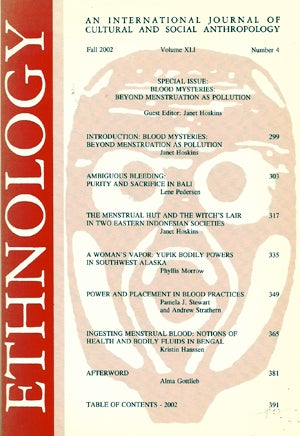
Edited by Janet Hoskins (2002)
-

Edited by Janet Hoskins
Edited by Janet Hoskins, Fragments from Forests and Libraries is a compilation of important articles by Valerio Valeri, a scholar whose research ranged from the rainforests of the island of Seram to European archives and libraries. Along with nine essays previously published in English, the book contains a number of studies translated for the first time and one unpublished work.
This book is part of the Ritual Studies Monograph Series, edited by Pamela J. Stewart and Andrew Strathern, Department of Anthropology, University of Pittsburgh.
“Throughout, the writing is scholarly, steeped in an unusually extensive knowledge of European history and philosophy, which Valeri often brings to bear in unexpected and illuminating ways on the complexities of Huaulu life….This will be a most useful text in undergraduate and postgraduate courses in anthropology, not least because, in its independence of thought, broad range of interests, and its refusal to specialize narrowly, it sets an example we all should try to emulate.” — Simon Harrison, The Journal of The Royal Anthropological Institute, September 2003
-
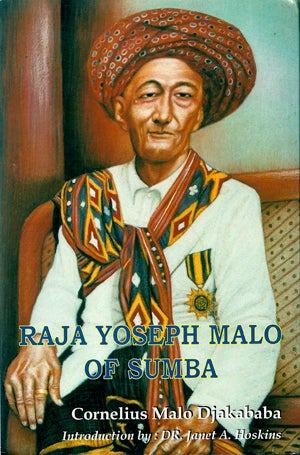
-
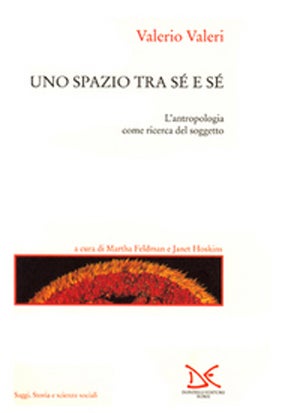
Co-edited with Martha Feldman.
Publications: Books
Contact Us
Professor Janet Alison Hoskins
Phone: (213) 740 – 1913
Email: jhoskins@usc.edu
Location
University of Southern California
3601 Watt Way,
GFS 131
Los Angeles, Ca 90089-2532